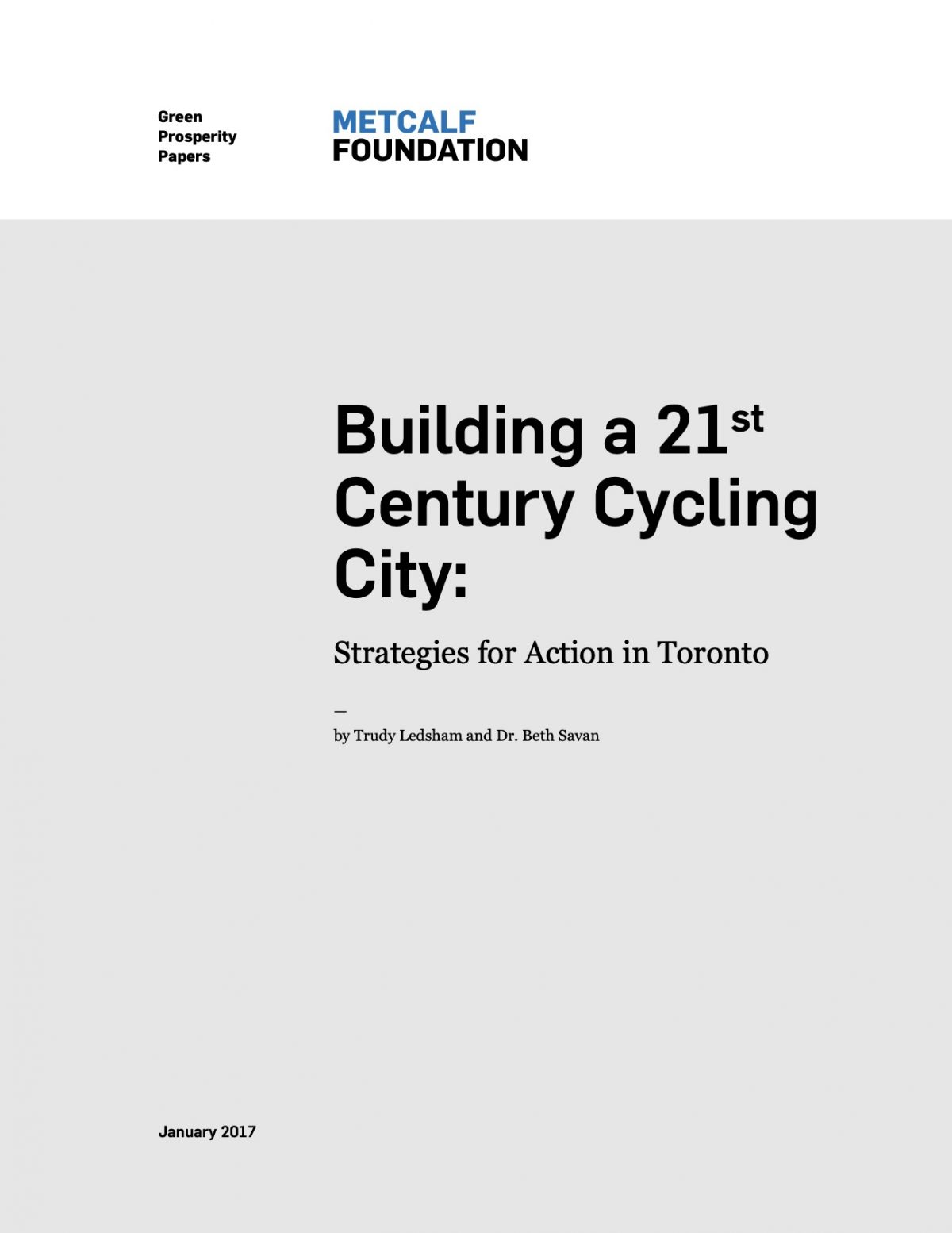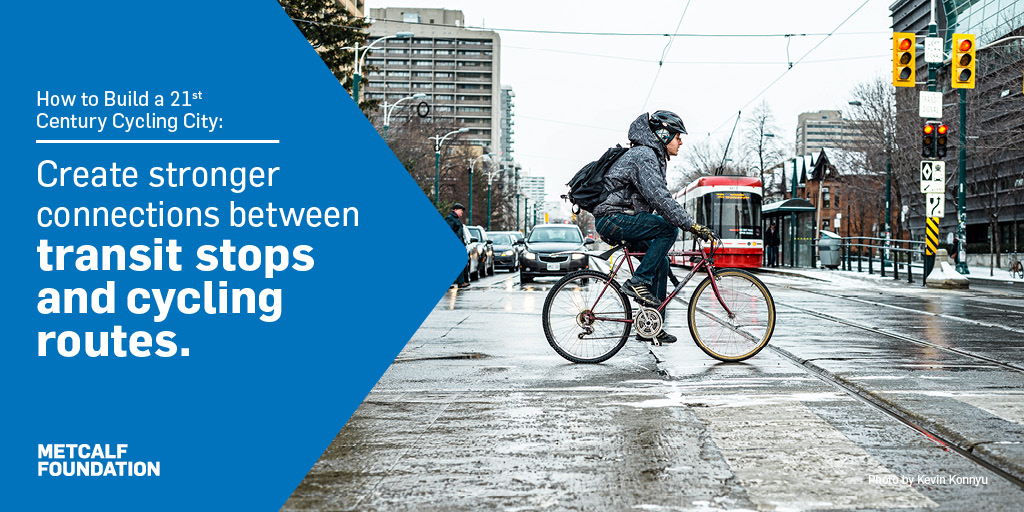The population of the Greater Toronto Area is projected to increase by almost 40% over the next two decades. As our population grows, so will the number of cars competing for limited road space. A new approach to urban mobility is needed to address this congestion, one that ensures that all Torontonians have the ability to move easily and affordably across the city.
Supporting Toronto’s transition to a “cycling city” is a sensible and inexpensive solution to the mounting gridlock. Half of all trips taken within the GTA are short enough to be comfortably accomplished using a bicycle. If a large portion of these travellers made the switch to cycling, it would liberate significant road space, lower carbon emissions, and improve quality of life for all Toronto residents — whether or not they travel by bike.
Building a 21st Century Cycling City: Strategies for Action in Toronto offers a bold and practical vision of the city’s cycling future. Developed through a comprehensive consultation and research process, it presents an integrated series of recommendations grounded in three focus areas: behavioural factors, economic benefits, and policy and infrastructure. When executed in tandem, these recommendations can dramatically increase the city’s cycling population over the next five years.
Building a 21st Century Cycling City is the sixth and final paper in the Metcalf Foundation’s Green Prosperity series. The papers address a range of issues and opportunities in building a low-carbon, resource efficient, and resilient Canada.





